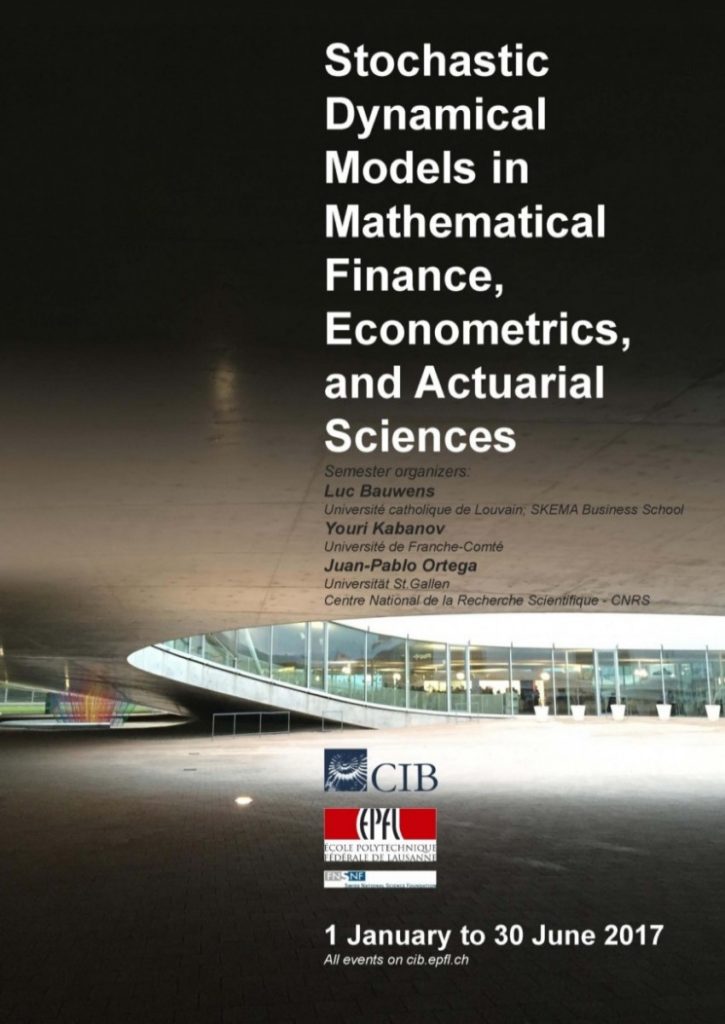This program focuses on three important areas where stochastic dynamical models play a major role, namely, mathematical finance, econometrics, and actuarial sciences. Stochastic dynamical models are of major importance in mathematical finance where, for example, the quality of the non-arbitrage pricing and hedging instruments for derivative products that this theory produces depends strongly on the accuracy of the models that describe the dynamical behavior of the underlying assets. The interplay between finance and stochastic calculus is one of the most spectacular examples in recent times of how the interaction between fundamental research and specific applications can produce remarkable results. Regarding the econometrics field, stochastic dynamical models appeared in the 1970s when the results of Box and Jenkins showed that extremely simple empirical stochastic discrete time linear models were capable of extraordinary descriptive performances when compared with much more sophisticated deterministic models. The setup used in this foundational work created a tradition in which discrete time prescriptions are predominant and where the mathematical tools used are closer to statistics than to stochastic analysis. In time this has led to the development of time series models for financial data, in particular volatility models. Actuarial mathematics has been historically much more conservative as far as the exposure to mathematical sophistication is concerned. The main theoretical foundation has been for a long time the so-called risk theory whose cornerstone is the classical Cramér-Lundberg model. An important volume of work has been devoted to calculations of ruin probabilities on finite or infinite time intervals, with various assumptions on the claim distributions, the structure of the arrival process, and sometimes invoking strong independence hypotheses. Even though most of these arguments are purely static, starting from the 1990s, the actuarial practice has quickly moved into a more dynamic setup due in part to the increasing role of the financial system in the insurance industry.
The main goal of this program is capitalizing on the cross-fertilization potential between these fields that their diverse and nonaligned historical development have created, by bringing together world class researchers in these three areas via their participation in the organized events or by making possible their interaction during their stays at the CIB.
The program is built around three main types of activities that constitute the central backbone of the program and will ensure a sustained working flow.
1. Two major cross sectional conferences at the beginning and at the end of the program. The semester will start with the 10th Bachelier Colloquium on Mathematical Finance and Stochastic Calculus in Métabief and will close with a major conference.
2. Two schools for young researchers and lecture series/courses on the research topics proposed, delivered by renowned participants.
3. Simultaneous visitors with profiles associated to the three major themes of the program in order to enhance the potential for transversal research.


